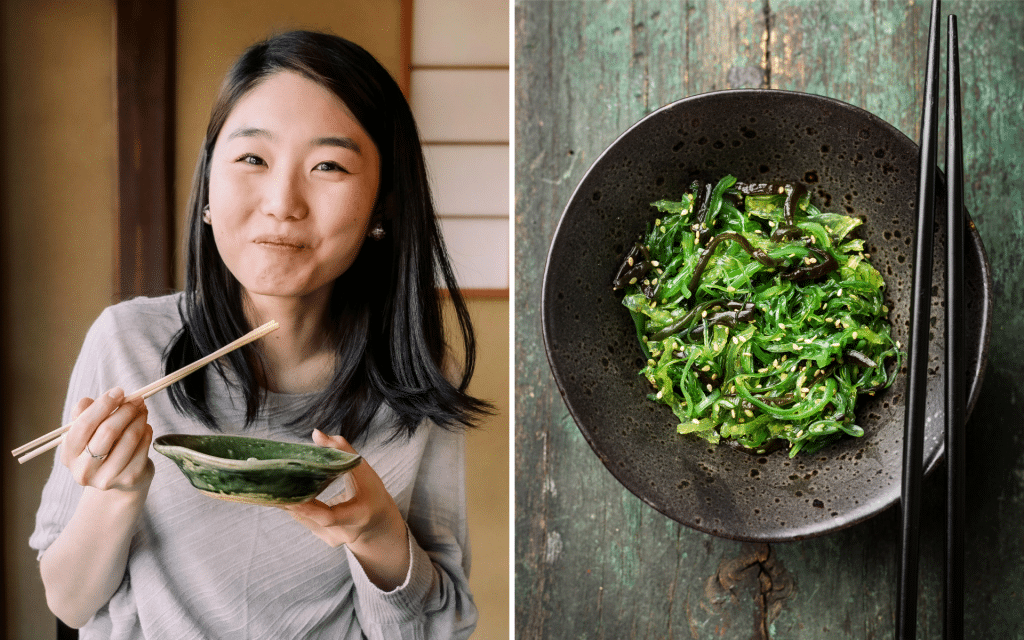There’s no denying that obesity is a global issue that has left no part of this world untouched. In fact, the World Health Organisation states that not only have adult and adolescent numbers doubled and quadrupled respectively since 1990, but as of 2022, 1 in every 8 people around the world are living with obesity (1).
However, even as cases of obesity rise worldwide, in countries in Asia, specifically East Asia, the progress of obesity seems very slow compared to other parts of the world. In Japan, a survey published in 2001 showed that only 3% of the adult population had a prevalence of obesity (2).
In a more recent study published in the Journal of Asian Pacific Society of Cardiology, researchers noted that even among Asian-Pacific countries, Japan had the lowest prevalence of obesity, at just 4.5% in 2019 (3). So what sets the Japanese people apart from the rest of the world in the fight against obesity?
Could it be how they eat? Read on to learn more about the Japanese diet plan and what we could learn from it.
What Is a Japanese Diet Plan?
Today, experts are in agreement that due to rapid socioeconomic growth, many diets worldwide, in Japan and other East Asian countries included, have seen an increase in processed foods with higher salt, fat, and sugar content (4). For healthy eating tips, we need to look at the traditional Japanese diet, rather than the modern version that is seen today.
When it comes to weight loss, progress is made by inches, not miles, so it’s much harder to track and a lot easier to give up. The BetterMe: Health Coaching app is your personal trainer, nutritionist, and support system all in one. Start using our app to stay on track and hold yourself accountable!
Characteristics of a Traditional Japanese Diet and How It Can Help with Weight Loss and Management
Traditional Japanese cuisine, also known as Washoku, has the following characteristics (5):
The Menu
The basic Washoku menu has a high consumption of fish and soybean products and a low consumption of animal fat and meat. The serving table always has multiple dishes that are as follows:
- A staple food – This is made from grains and is generally rice, but could also include noodles or glutinous rice
- A soup – This is usually miso soup – a soybean product. The soup is made with seaweed, shellfish, and vegetables.
- The main dish – This is the protein portion of the meal and is either fish, some type of seafood, or in rare cases, meat.
- Side dishes – These are meal accompaniments and are made up of a variety of vegetables, wild plants, mushrooms, seaweed, or even shellfish (5).
Not only are the foods mentioned above generally low in calories, they are also whole foods and minimally processed. Even the rice and noodles are made from wholegrains that have undergone minimal processing so they likely maintain the complex carbohydrates and fiber.
Smaller Bites
Even today, Japanese people generally eat their meals with chopsticks instead of spoons or a fork as most of us do in Western countries – and for good reason. Not only is it customary to eat Washoku with chopsticks, it is also believed that taking smaller bites contributes to satiety (5).
Portion Control
Today, many of us are learning about the benefits of option control for weight control and management, something the Japanese people seem to have figured out long ago. Washoku meals are served in small portions and also served in small bowls, which is said to prevent overeating (5).
The Presence Of Soup
Soup remains a huge part of the Japanese table today, but a lot of cultures around the world don’t include it, which could be a contributing factor to the differences in obesity prevalence. Studies have found that Japanese men who consume soup have a lower BMI, waist circumference, and waist-to-hip ratio, possibly because soup helps increase satiety (6).
One study published in 2014 also found soup consumption to be associated with a reduced intake of total fat and an increased intake of protein, carbohydrates, and dietary fiber, in addition to several vitamins and minerals (7).
Vegetables and Water
When people speak about healthy Japanese food, they are often referring to the fact that a huge part of the cuisine, particularly the side dishes, is made up of a variety of vegetables. The traditional Japanese diet is rich in a variety of vegetables that are cooked in dashi stock which helps improve their palatability and allows people to eat more of them (5).
Today, we know that vegetable (and fruit) consumption is essential for weight control as these foods are high in fiber but very low in calories and fats. Due to how few calories they have, you can eat a large amount of these foods without going over your allotted calorie intake for the day (8).
The Woshaku Japanese diet uses water in cooking to reduce or remove bitterness from some foods and also increase the umami in other foods. Meals in the traditional Japanese diet are also made through steaming, boiling, and stewing, which is said to contribute to the amount of water people consume in a day (5).
Today, we are encouraged to drink more water as it can help boost satiety and suppress appetite while slightly boosting thermogenesis, which helps us burn a few more calories throughout the day (9). The American Heart Association also states that cooking methods that use water are among the healthiest methods.
The organization recommends methods such as blanching, poaching, and steaming as their top 10 healthiest cooking methods that are good for your heart and waistline (10).
Read more: 7-Day Mediterranean Diet Intermittent Fasting Meal Plan
What Do Japanese Eat for Weight Loss?
While we cannot say exactly what all Japanese people eat to lose weight, it can be seen that their traditional diet may help you lose weight. As mentioned above, the traditional Japanese diet is made up of whole foods in addition to fish, seafood, and a variety of vegetables. Today, a lot of the characteristics of the traditional diet can be seen in the modern-day Japanese diet.
In a study published in 2022, researchers noted that the Japanese dietary pattern today is characterized by a high intake of soybean products, fish, vegetables, rice, seaweed, miso soup, pickles, and green tea (11). Research on all these foods has suggested that they can help with weight loss.
- As mentioned above, vegetables are good for your health and they also make a fantastic addition to your plate when you want to add more volume to your meal without risking too high of a calorie intake.
- Studies on soy products have shown that they may help reduce body weight and fat percentage and also help with significant reductions in BMI and waist circumference (12, 13).
- In terms of fish, studies over the years have shown that a diet that is high in fish and seafood can help with weight loss, in addition to the improvement of glucose-insulin metabolism and dyslipidemia. Studies have also suggested that fish can be good for other factors such as the preservation of muscle mass, blood pressure, and heart health, as well as preventing diabetes (14, 15, 16).
- We’ve mentioned that soups are a great weight loss tool. Check out our article on the benefits of miso soup for weight loss to see how adding it to your diet may help you reach your body goals.
- Green tea is another fantastic weight loss drink. Green tea helps increase the amount of water you consume in a day, and studies on catechins found in green tea have found them to have some potential anti-obesity activities/properties (17, 18).
In one study that was published in 2013, researchers found that when diabetic patients drank 4 cups of green tea a day, this resulted in a significant decrease in body weight, BMI, waist circumference, and systolic blood pressure (19).
Finding healthy Japanese recipes with these ingredients can help you get started on your journey toward weight loss. We suggest starting with some delicious Japanese eggplant recipes.
What Can I Eat to Lose Weight in 14 Days?
There’s nothing specific you can eat that will help you lose a significant amount of weight in just 14 days. No diet can help you do this and any that promises such miraculous results is a fad. According to the CDC healthy weight loss is usually a loss of 1-2 pounds a week (20).
This means that in 14 days, you may be able to lose 2 to 4 pounds. This rate may look slow to you, but it is healthy and there is less likelihood of gaining all that weight back at the end of your weight loss journey. To achieve healthy and sustainable weight loss, you need an overall healthy, balanced, reduced-calorie diet and increased physical activity.
Read more: Holistic Diet Food List Starter Guide — Benefits, Cooking Methods, And Important Tips
What Japanese Superfood Burns Fat?
According to Harvard Health, there is no such thing as a superfood – at least not to nutrition scientists and dietitians. However, what the general public considers a ‘superfood’ is any food that is rich in antioxidants, fiber, or fatty acids that are good for your health (21).
The only thing that can perhaps match this explanation is matcha, a powdered green tea powder that is made from processed green tea leaves. While Japan is largely seen as the birthplace of matcha, this tea originally came from China through a Buddhist monk (22).
Matcha is essentially green tea, which as we’ve mentioned above has been suggested to have anti-obesity properties and may help with weight loss. A review published in 2022 also stated that matcha may have positive benefits relating to cognitive function, stress levels, inflammation and oxidation, serum glucose and lipid profile, and even anti-tumor function (23).
However, drinking matcha alone won’t magically result in weight loss. You still need an overall healthy, balanced diet with a calorie deficit.
If you wish to free yourself from all the extra pounds that have been weighing you down for way too long, start using the BetterMe: Health Coaching app and overhaul your entire life!
What Is the Japanese Morning Secret for Weight Loss?
Some claim that the Japanese ‘morning banana diet’ can help with weight loss. However, there is no scientific research that backs this diet or the sentiments given by the proponents of the eating plan.
Rather than relying on such a diet, we suggest following the tips above on the traditional Japanese diet, eating at a calorie deficit, and even trying Japanese yoga, which can help burn calories and boost your mental well-being (24, 25).
As shown above, their traditional diet relies on a lot of whole foods, vegetables, fish, and soups. The traditional diet also emphasizes portion control and eating slowly with slower bites. The former helps prevent overeating and the latter is said to promote satiety, all factors that help with weight loss and management. As mentioned above, this can likely be attributed to their traditional diet, which is rich in whole foods, protein, and vegetables and it’s also a diet that stresses the importance of portion control. There is no Japanese secret or miraculous remedy for weight loss – just a wholesome diet and portion control. As we’ve seen above, matcha green tea may be helpful for weight loss and other health benefits, largely due to the catechins that are found in this tea. However, you need to incorporate it into an overall healthy, balanced diet with a calorie deficit if you want to lose weight.Frequently Asked Questions
How do Japanese people lose weight fast?
How do the Japanese stay slim?
What is the Japanese weight loss remedy?
What is the Japanese morning drink for weight loss?
The Bottom Line
Contrary to what you may have initially assumed, the Japanese diet plan is no different from any other normal healthy diet. Sure, Japanese people may use ingredients, sauces, and other foods that are unique to them, but at the end of the day, they mostly eat whole grains, fish and other seafood, vegetables, and soup. These foods are incredibly healthy and portion control also goes a long way in helping with weight loss and management through unconscious calorie control.
DISCLAIMER:
This article is intended for general informational purposes only and does not serve to address individual circumstances. It is not a substitute for professional advice or help and should not be relied on for making any kind of decision-making. Any action taken as a direct or indirect result of the information in this article is entirely at your own risk and is your sole responsibility.
BetterMe, its content staff, and its medical advisors accept no responsibility for inaccuracies, errors, misstatements, inconsistencies, or omissions and specifically disclaim any liability, loss or risk, personal, professional or otherwise, which may be incurred as a consequence, directly or indirectly, of the use and/or application of any content.
You should always seek the advice of your physician or other qualified health provider with any questions you may have regarding a medical condition or your specific situation. Never disregard professional medical advice or delay seeking it because of BetterMe content. If you suspect or think you may have a medical emergency, call your doctor.
SOURCES:
- Obesity and overweight (2024, who.int)
- Rising Burden of Obesity in Asia (2010, pmc.ncbi.nlm.nih.gov)
- Obesity in the Asia-Pacific Region: Current Perspectives (2024, japscjournal.com)
- Obesity Pillars Roundtable: Obesity and East Asians (2022, pmc.ncbi.nlm.nih.gov)
- The Role of the Japanese Traditional Diet in Healthy and Sustainable Dietary Patterns around the World (2018, pmc.ncbi.nlm.nih.gov)
- Frequency of soup intake is inversely associated with body mass index, waist circumference, and waist-to-hip ratio, but not with other metabolic risk factors in Japanese men (2018, pubmed.ncbi.nlm.nih.gov)
- Soup consumption is associated with a lower dietary energy density and a better diet quality in US adults (2014, pubmed.ncbi.nlm.nih.gov)
- Healthy Habits: Fruits and Vegetables to Manage Weight (2023, cdc.gov)
- Does drinking water before meals really help you lose weight? (2024, health.harvard.edu)
- Don’t Fry! Give Healthy Cooking Methods a Try (2024, heart.org)
- Japanese Diet and Mortality, Disability, and Dementia: Evidence from the Ohsaki Cohort Study (2022, mdpi.com)
- Role of Dietary Soy Protein in Obesity (2007, pmc.ncbi.nlm.nih.gov)
- Soy Products Ameliorate Obesity-Related Anthropometric Indicators in Overweight or Obese Asian and Non-Menopausal Women: A Meta-Analysis of Randomized Controlled Trials (2019, pmc.ncbi.nlm.nih.gov)
- Dietary fish as a major component of a weight-loss diet: effect on serum lipids, glucose, and insulin metabolism in overweight hypertensive subjects (1999, sciencedirect.com)
- Seafood intake and the development of obesity, insulin resistance and type 2 diabetes (2019, pmc.ncbi.nlm.nih.gov)
- Fish Consumption: A Review of Its Effects on Metabolic and Hormonal Health (2021, pmc.ncbi.nlm.nih.gov)
- Ingestion of a tea rich in catechins leads to a reduction in body fat and malondialdehyde-modified LDL in men (2005, pubmed.ncbi.nlm.nih.gov)
- Green Tea Catechins and Sport Performance (n.d., ncbi.nlm.nih.gov)
- The effects of green tea consumption on metabolic and anthropometric indices in patients with Type 2 diabetes (2013, pmc.ncbi.nlm.nih.gov)
- Steps for Losing Weight (2023, cdc.gov)
- Superfoods or Superhype? (n.d., nutritionsource.hsph.harvard.edu)
- Matcha (2024, britannica.com)
- The therapeutic potential of matcha tea: A critical review on human and animal studies (2022, pmc.ncbi.nlm.nih.gov)
- Mindfulness and psychological status of Japanese yoga practitioners: A cross-sectional study. (2015, psycnet.apa.org)
- Yoga: An Exploration of Its Cultural Adaptation and Practice in Japan (2023, researchgate.net)











